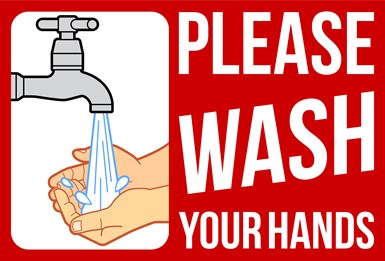Part Cleanliness is Second Nature
Appears in Print as: 'Clean Hands vs. Clean Machined Parts'
While the general public has ramped up its concern about cleanliness, I can’t help but think about shops that have parts cleaning operations that are always concerned about cleaning.
#columns
As I write this in mid-March, the world is very concerned about the spread of the coronavirus. Keeping our hands clean is being stressed over and over as the most effective way to stay virus-free.

Shouldn’t we all be concerned about cleanliness all the time?
While the general public has ramped up its concern about cleanliness, I can’t help but think about shops with parts cleaning operations that are always concerned about it. They constantly consider cross-contamination, recontamination, whether their customers’ parts are clean enough (meeting specifications) and sometimes if they are too clean.
Although most people try to prevent germs from spreading, especially with a pandemic on the rise, many have misconceptions about how to do so. They may wash their hands, but not thoroughly, or perhaps don’t use enough soap. The same holds true for parts cleaning processes. And there are some fallacies within the parts cleaning industry as well.
For example, according to LPW in “Cyclic Nucleation System Safely Cleans Complex Parts,” ultrasonic cleaning often cannot clean in the crevices of a small, precision-machined part. Did you know that? However, the company says its cyclic nucleation process (CNp) can do the job using only water. The technology consists of a vacuum-flood cleaning method in which gas bubbles are formed on all surfaces, including inside small holes and capillaries. As the bubbles implode when the vacuum is suddenly removed, they generate a pressure wave that cleans the entire surface of the parts. Be sure to visit the article online to watch a video that illustrates how the process works.
Although effective for some cleaning applications, CNp isn’t for all. Some parts need a chemical to rid them of all the oil and dirt that builds up during certain machining processes. I talked to Cox Manufacturing’s Mike Petrusch and Kyzen Corp.’s Joe McChesney to get the scoop about how these two companies work together to figure out the best chemistry to clean Cox’s customers’ parts in a vacuum vapor degreasing system in “The Right Solvent Creates the Cleanest Parts.”
My hope is that by the time you read this, the coronavirus will no longer be spreading and “lockdowns” have ended. I also hope most people are still frequently washing their hands just as machine shops are continuously finding the best ways to clean parts and keep them clean.
RELATED CONTENT
-
Get to Know Cleanliness Standards
With a small amount of practice, it is possible to understand the underlying motivation of a cleaning standard and to figure out the specific aspects of the specification that are applicable to the customer.
-
Manufacturing Knowledge is Power
The Knowledge Centers with video produced by brands such as Production Machining on the IMTS spark online platform take deep dives into technology and trends related to various CNC machining and manufacturing topics.
-
What Machine Shops Should Know About Material Bar Straightness
Many operations require a high degree of bar straightness, especially when the material is to be presented to a machine by a bar feeder. For that sector of the market, the following is a brief review of the steps your bar supplier can take to ensure positive results.
.png;maxWidth=970;quality=90)


